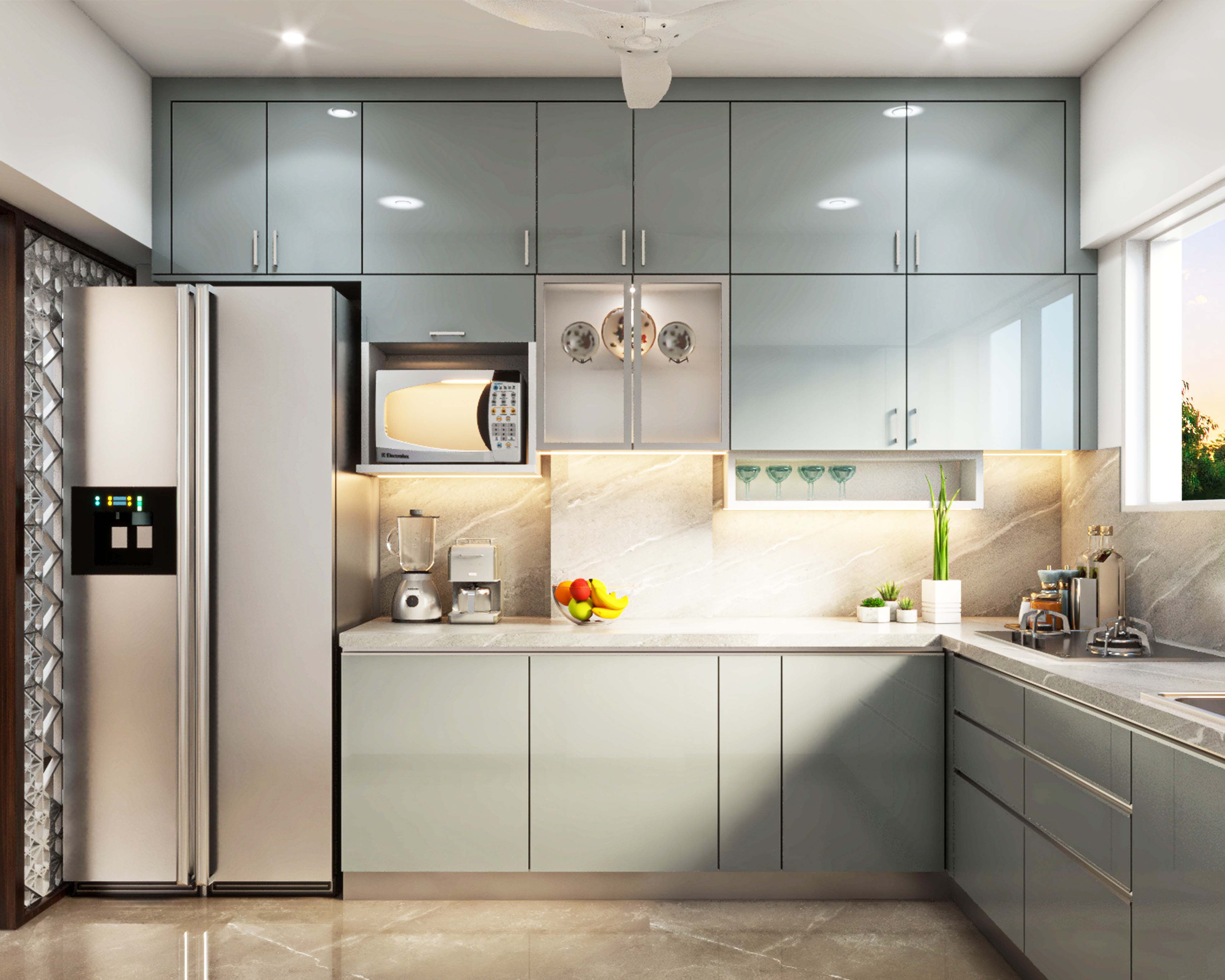
For the man who values self-reliance, precision, and the satisfaction of a job well done, the kitchen is more than just a place to eat; it’s a domain of creation and mastery. At the heart of this domain lies an indispensable tool: the knife. A truly good knife is an extension of your will, a partner in culinary conquest, capable of transforming raw ingredients into edible art with grace and efficiency.
Yet, choosing this lifelong companion is often shrouded in confusion, a labyrinth of options that can deter even the most determined individual. This guide is forged from practical wisdom, designed to equip you with the fundamental knowledge required to make an informed decision, ensuring that the knife you choose isn’t just a utensil, but an enduring instrument that stands the test of time and task. It’s about empowering you to select a tool that truly elevates your craft.
We embark on a journey of understanding, dissecting the common misconceptions and laying bare the foundational principles that govern a knife’s utility, performance, and feel. Mastery in the kitchen begins with understanding your tools, and a great knife is the cornerstone of that understanding. Let us sharpen your knowledge, so you can make a choice that will serve you faithfully for decades to come.
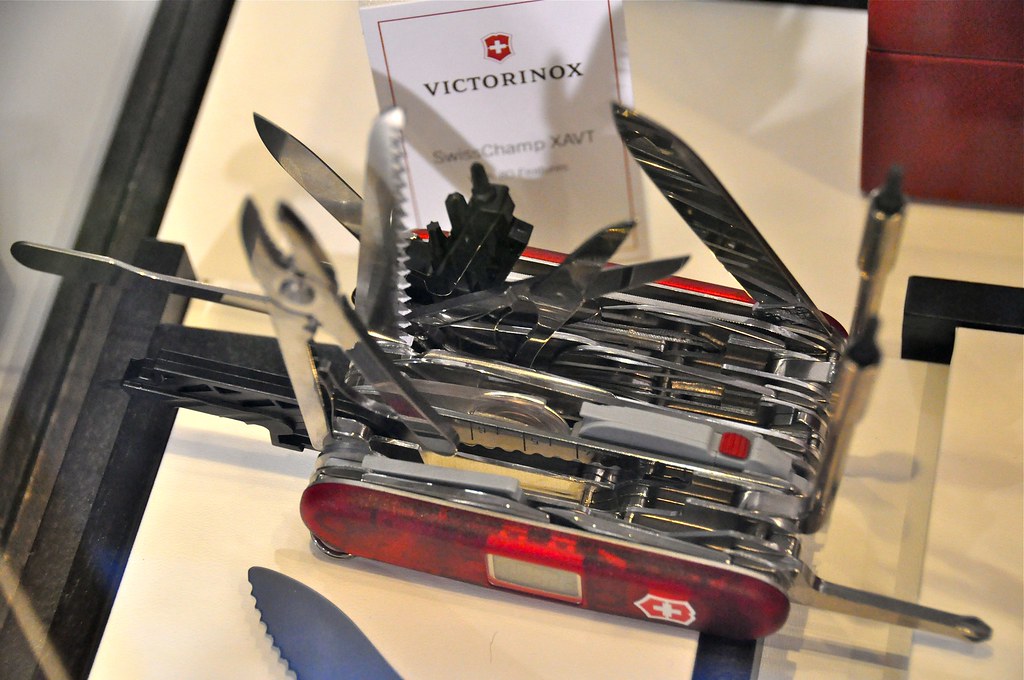
1. The Myth of the Mammoth Knife Set: Start Small, Build Smart
The allure of a sprawling knife block, brimming with a dozen specialized blades, often captivates aspiring home chefs. However, a crucial piece of common sense dictates a different path: “Let us first dispel an old myth that every household needs a large set of kitchen knives.” This pervasive notion often leads to cluttered countertops and unused tools, rather than enhanced culinary prowess.
Instead of overwhelming yourself with an arsenal you don’t yet understand, the wise approach is to begin with singular purpose. “We recommend you start with one basic, medium-sized knife.” This foundational blade will serve as your primary workhorse, allowing you to develop a deep familiarity with its balance, edge, and capabilities across a wide array of tasks. It’s about quality over quantity, investing in a tool you’ll truly master.
Your knife collection, much like your culinary skills, should evolve organically. “Once you’ve got a good all-rounder, consider getting a smaller petty (sometimes called a paring knife in the West) for more intricate and in-hand tasks, for which the largest knife can seem unwieldy.” This incremental approach ensures that each addition to your kitchen arsenal is a deliberate, informed decision, driven by genuine need and observed gaps in your existing tools.
The philosophy here is one of mindful growth and practical efficiency. “From there, you can slowly build your knife collection, gradually expanding your kitchen knife arsenal based on informed decisions and self-observation in the kitchen.” This prevents wasteful purchases and fosters a deeper appreciation for each tool. Remember the adage: “Do not buy knives you don’t need: less is more!” This wisdom underpins a collection that is both functional and deeply personal, reflecting your unique journey.
“A good knife collection grows over the years and reflects the specialized needs and evolving cooking habits of its owner.” It’s a testament to your journey, a curated selection that tells a story. This journey of careful selection “all starts with that first (and usually favorite) knife, so choose it wisely.” It’s an investment in your skill and your future culinary endeavors.

2. The Foundational Pillars: Purpose, Material, Feel
When confronting the vast landscape of kitchen knives, a man seeking true mastery must anchor his decision-making in three foundational pillars. These are the unchanging truths that guide the selection of any exceptional blade. “When choosing a knife, you should consider the following aspects: Purpose and use → the shape of the blade; Material → blade characteristics, edge retention, sharpening and care; How a knife feels in your hand → balance, length, and handle.”
First, consider the blade’s ultimate purpose and intended use. Knives are not universal; they are specialized instruments. Their design is a direct reflection of the cooking techniques, ingredients, and even cultural traditions they are meant to serve. Understanding what you will primarily use the knife for – whether it’s dicing vegetables, slicing meat, or intricate garnishing – will immediately narrow down your options and steer you towards the most appropriate blade shape.
Secondly, the material of the blade is paramount, as it dictates the knife’s core performance attributes. The steel from which a blade is forged profoundly influences its sharpness, how long it retains that keen edge, and the ease with which it can be resharpened. It also impacts its resistance to damage and corrosion. A deep appreciation for steel composition is the mark of a discerning buyer, understanding that the heart of any great knife lies in its metallurgical pedigree.
Finally, and perhaps most intimately, is how the knife feels in your hand. This is where the subjective experience intertwines with objective design. Factors such as balance, overall length, and the ergonomics of the handle are deeply personal. A knife must feel like a natural extension of your arm, offering a sense of control and comfort during extended use. This tactile connection is often underestimated but is critical for preventing fatigue and ensuring precision.
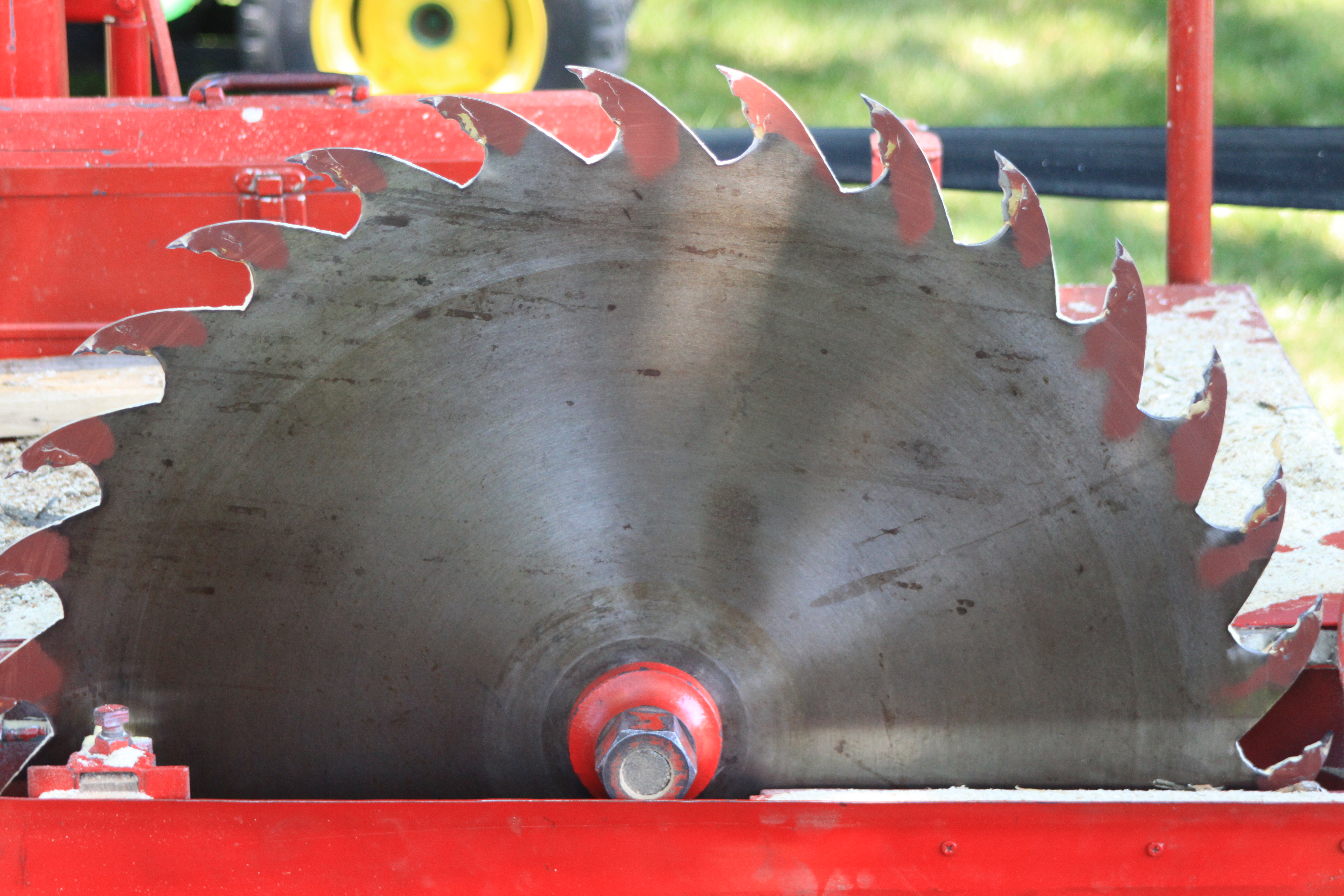
3. Understanding Blade Geometry: Matching Shape to Task
The intuitive connection between a chef and his blade often transcends conscious thought, a sentiment aptly captured by the notion that “the palm of your hand chooses the knife even before your mind can wrap itself around it.” While instinct plays a role, understanding the fundamental principles of blade geometry allows for an informed decision that complements this intuitive grasp. The shape of a knife’s blade is not merely aesthetic; it is entirely functional, dictating its efficacy for specific tasks.
Two general rules serve as guiding lights in this exploration of form and function. “→ The wider the blade, the more suitable it is for cutting fruit and vegetables and the less convenient it is for delicate tasks, such as peeling.” This design maximizes contact with the cutting board and provides clearance for knuckles, making it ideal for robust chopping motions. Conversely, “→ Narrow and long blades are more suitable for cutting raw meat and less convenient for fast chopping,” allowing for clean, long slices through muscle and sinew with minimal drag.
For most kitchen knives, the razor-sharp edge is their defining characteristic, enabling effortless cutting “without exerting too much force.” Such precision blades are typically thinner, making them exceptionally effective. However, this inherent delicacy comes with a caveat: “Such blades are usually thinner and could get damaged if you use them for more heavy-duty tasks.” Respecting a thin blade’s limitations is crucial for its longevity and performance.
This principle is starkly articulated in a rule that applies to all Japanese knives, renowned for their fine edges: “if you wouldn’t bite into it, don’t cut it with a knife.” This stark admonition serves as a powerful reminder of the specific, often delicate, nature of these high-performance tools. It emphasizes that certain tasks, like “chopping bones, slicing fish, or opening a coconut with them,” are simply beyond the intended scope of these finely honed instruments, requiring instead a more robust, specialized tool.
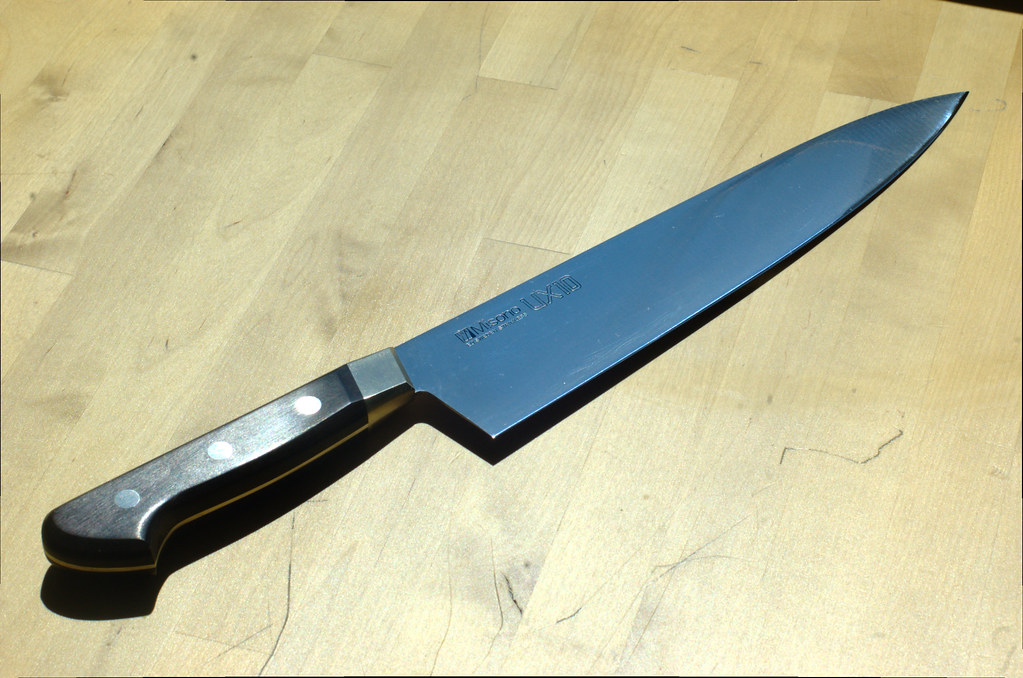
4. The Versatile Workhorses: Gyuto, Santoku, and Bunka
For the man building a foundational kitchen arsenal, the quest for a versatile, all-purpose knife is paramount. It’s about finding that single blade capable of tackling a majority of daily culinary challenges with competence and ease. In this pursuit, certain Japanese designs stand out as exceptional starting points, offering a blend of tradition, performance, and adaptability that is hard to match.
The “Gyuto, a Japanese version of the Chef’s knife, is a good all-rounder.” This blade is the quintessential utility knife, designed to handle everything from slicing and dicing to chopping with remarkable efficiency. Its profile and length make it a natural fit for a wide range of Western and Eastern cooking techniques, allowing a confident cook to transition seamlessly between tasks without needing to switch knives.
Alongside the Gyuto, the “Santoku and bunka tend to be slightly shorter and wider than the gyuto and are also great starting points as they will handle most tasks.” These knives offer a different balance, often preferred for their nimble feel and ease of use in smaller spaces or for those who prefer a more compact blade. Their unique shapes, particularly the flatter profile of the Santoku, excel at specific cutting actions, making them highly effective for general kitchen work.
When considering a Gyuto, a specific size often proves most advantageous for broad utility. “A smaller gyuto of about 210mm (8.3″) perhaps offers the most versatile use, as it is excellent both for larger pieces of meat or vegetables yet also nimble enough for more intricate work.” This length strikes an ideal balance, providing sufficient leverage for substantial ingredients while remaining manageable for detailed work, making it an excellent choice for a primary, all-around kitchen companion.
Ultimately, the choice among these versatile options can also be tailored to your primary cooking habits. “If you’re preparing plenty of vegetables, the santoku or bunka are a better choice, because of their wider blade that is perfect for cutting vegetables and fast chopping on a cutting board.” Their design facilitates the rhythmic up-and-down motion essential for efficient vegetable preparation, demonstrating how a thoughtful choice can enhance both speed and precision in your daily cooking.
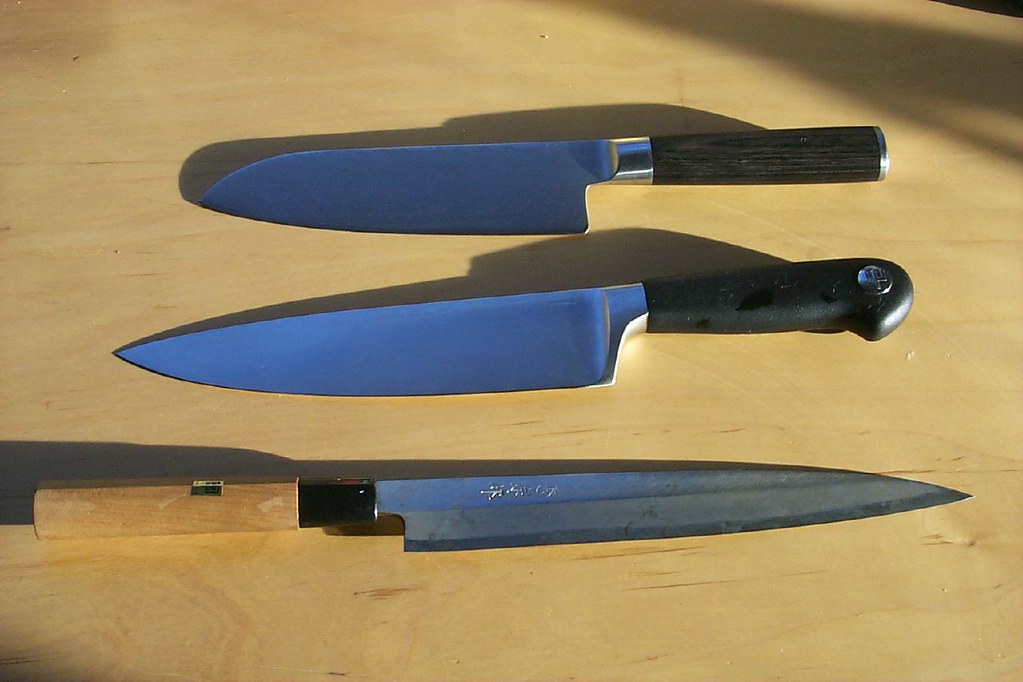
5. Specialized Craftsmanship: Knives for Meat, Vegetables, and Delicate Tasks
While a versatile all-rounder forms the backbone of any man’s kitchen, true mastery is achieved by recognizing when a specialized tool is required. Just as a craftsman selects a specific chisel for a particular cut, the discerning cook understands that certain ingredients and techniques demand blades designed with singular purpose. This evolution from generalist to specialist marks a significant step in your culinary journey, opening doors to greater precision and efficiency.
For tasks involving substantial cuts of protein, dedicated meat knives are indispensable. “Kitchen knives that make quick work of large pieces of meat are the yanagiba and the slicer, as well as narrower and longer gyuto/chef’s knives.” The yanagiba, with its long, thin, single-bevel blade, is traditionally used for slicing raw fish with unparalleled precision, creating clean, smooth cuts. Slicers, often thinner than a chef’s knife, glide effortlessly through cooked meats, preserving juices and ensuring uniform portions. Narrower Gyutos also adapt well for this purpose, offering a fine edge for controlled, elongated movements.
When the focus shifts to the vibrant world of vegetables, different blade geometries come into their own. “Nakiri and usuba both have a squared-off tip that is designed for chopping and peeling vegetables (also the Japanese cutting technique katsuramuki that creates long, thin sheets from cylindrical vegetables).” The Nakiri, a double-bevel knife, is a robust chopper, perfect for rapid preparation of leafy greens and firm root vegetables. The Usuba, a single-bevel blade, demands greater skill but offers supreme precision for ultra-thin cuts, favored by experienced chefs for its ability to create delicate, translucent sheets, a testament to true knife control.
For the intricate details, the realm of delicate tasks calls for smaller, more agile blades. “Petty and utility knives are smaller kitchen knives intended for more delicate tasks in the kitchen, such as peeling, paring and decorating, coring apples, cutting out potato eyes and similar tasks.” These compact tools offer superior control for in-hand work, where a larger knife would be cumbersome. Their shorter blades and finer tips allow for intricate movements, transforming ordinary ingredients into visually appealing components.
Beyond these focused applications, the utility of longer petty and utility models extends to more substantial yet still precise tasks. “Longer models (150mm) can be used for filleting portioned fish, cutting poultry, slicing smaller pieces of dry meats and trimming meat.” This demonstrates their adaptability, bridging the gap between delicate work and lighter butchery, making them valuable additions to a growing collection. Finally, for the most demanding tasks, like breaking down bone or heavy chopping, a different breed of blade is essential: “For more difficult kitchen tasks we need a suitably thicker kitchen knife, such as a deba or a heavier meat cleaver.” These robust tools are built to withstand considerable force, embodying the strength required for the toughest challenges in the kitchen, ensuring your finer blades are preserved for their intended, delicate work.” , “_words_section1”: “1967
For the discerning man, understanding the material composition of his tools is as crucial as understanding their form. The very soul of a knife, its ability to cut, to hold an edge, and to withstand the rigors of the kitchen, is intrinsically linked to the steel from which its blade is forged. This is not merely a detail; it is the bedrock of performance, dictating how a knife will serve you day in and day out.
The quality of a kitchen knife is largely determined by the quality of the steel and its treatment. This, in turn, directly affects how sharp the blade is, how long it retains its edge when used correctly, how often a knife must be sharpened, and indeed, how demanding that sharpening process will be. A truly informed choice requires peering beyond the aesthetics to the metallurgical heart of the blade itself. We can glean much of this vital information simply by reading the tag specifying the steel the blade is made from.
In the world of kitchen knives, the vast array of options can be broadly categorized into three principal types of steel, each possessing a distinct set of strengths and weaknesses that align with different culinary demands. These categories include steels with a high content of carbon, exemplified by traditional Japanese steels such as Aogami or Shirogami, which are prized for their exceptional sharpness and ease of resharpening.
Next, we have stainless and semi-stainless steels, with VG-10 being a prominent example. These offer a good balance of corrosion resistance and edge retention, making them a popular choice for everyday use in many kitchens. Finally, at the pinnacle of modern metallurgy, are powdered steels, like ZDP-189 or SG2/R2. These advanced materials push the boundaries of performance, offering extreme hardness and edge retention for those who demand the absolute best from their blades.
A fundamental truth remains: good quality steel should be considered a foundation, a potential. This inherent potential, however, can only be fully unlocked by the most experienced master blacksmiths through the intricate processes of forging, tempering, and precise blade shaping. The journey from raw iron ore, through smelting, is merely the initial step in a complex series of transformations that ultimately yield a material suitable for a truly exceptional blade.
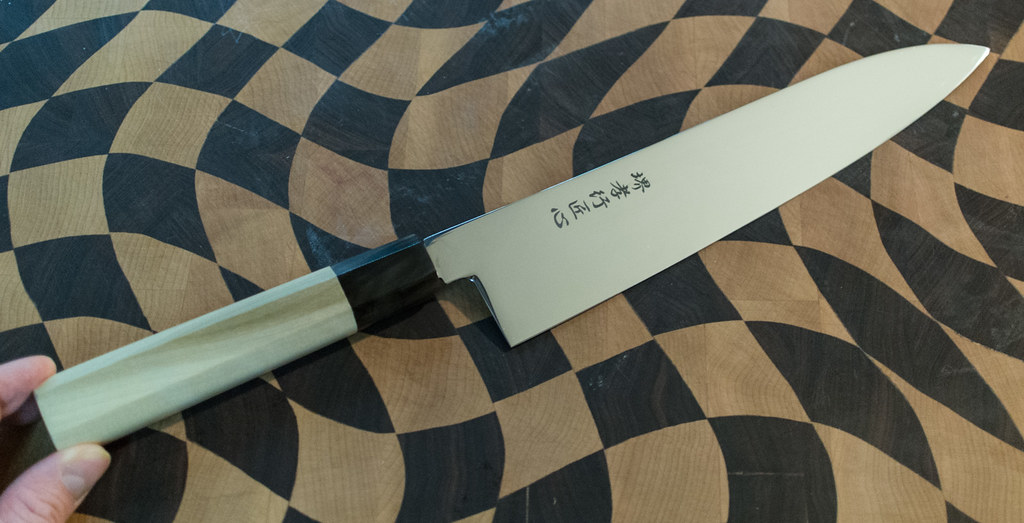
7. Decoding Steel Properties: What Truly Matters for Your Edge
Beyond the general categories, a deeper understanding of steel properties allows a man to make an even more astute selection, moving beyond basic labels to truly functional characteristics. When evaluating a knife’s material, certain properties stand paramount in their direct impact on the blade’s utility and longevity in your hands. These are the aspects that truly define a knife’s performance under pressure.
Primarily, a knife must be judged on its ability to withstand damage, its capacity to maintain a keen edge through repeated use, and the manner and difficulty of its sharpening. These are the core functional attributes that directly influence your daily experience in the kitchen, determining how reliably and effortlessly the knife performs its essential tasks. A blade that excels in these areas is a testament to superior craftsmanship and material selection.
While secondary to functionality, other properties still hold considerable weight. Resistance to rust, for instance, significantly impacts the knife’s maintenance and appearance over time. Furthermore, the inherent beauty of the material and the possibility of treating the blade to bring out appealing aesthetics, such as a distinctive patina or intricate Damascus pattern, contribute to the pride of ownership and the knife’s overall character.
At a more granular level, the specific composition of steel is crucial. Steel, by definition, is an alloy of iron with small amounts of carbon. This carbon content is a game-changer, as it profoundly increases the strength and hardness of iron, though it can simultaneously reduce its toughness, tensile strength, and malleability. It is through the precise addition of varying amounts of carbon that steel acquires its diverse characteristics—hardness, plasticity, and durability—allowing an experienced eye to infer a knife’s properties simply by examining its steel composition.
When shopping for a knife, if specific information on the type, quality, and hardness of the steel is conspicuously absent, you are often looking at a blade made of stainless steel with a high content of chromium (Cr) but a comparatively low content of carbon (C < 0.5%). While these blades resist rust well, their low carbon content means they quickly lose their edge. Conversely, high-carbon steel (C > 0.8%) remains sharp for longer and is easier to sharpen, though the lack of chromium means it will develop a unique patina over time. The sweet spot for many lies in stainless steel that boasts both a high carbon (C > 0.8%) and chromium (Cr > 10%) content, offering excellent edge retention, albeit being slightly more challenging to resharpen. The apex of current knife metallurgy is found in technologically advanced tool steels, which can contain an extremely high carbon content (C < 3%) balanced with enough chromium to prevent corrosion. Knives crafted from these steels undeniably lead the pack in edge retention, presenting a formidable choice for those dedicated to peak performance, even if they require a bit more effort in the sharpening process.
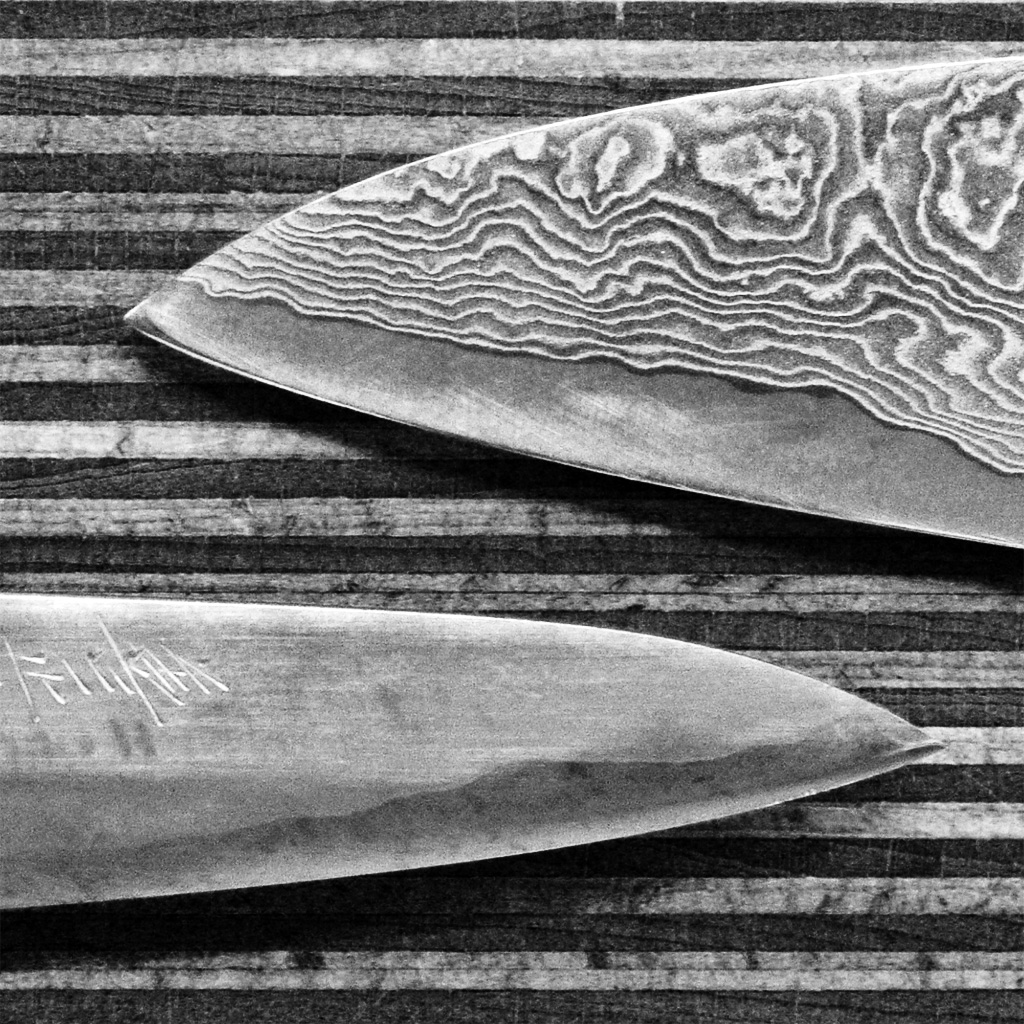
8. The HRC Enigma: Hardness and Your Knife’s Performance
For the man serious about his tools, understanding the hardness of a knife’s steel, measured on the Rockwell scale (HRC), is a critical piece of the puzzle. This metric isn’t just a number; it’s a direct indicator of a blade’s resilience, its capacity to hold an edge, and even the nuances of its maintenance. It separates the truly capable instruments from those destined for frustrating dullness.
A baseline for any decent kitchen knife is 56 HRC. Anything below this level signals a compromise in quality. A stainless-steel knife under 56 HRC will not only become blunt relatively quickly but will also prove difficult and frustrating to resharpen, demanding more effort than it’s worth. Blades marketed simply as “stainless” often have a very high chromium (Cr) content and a low carbon (C) content, which means that while they might resist rust, they rapidly lose their edge due to that very low carbon concentration, making them far from ideal for serious culinary work.
If your preference leans towards a completely stainless kitchen knife that still performs admirably, the key is to choose a blade made of steel with a lower chromium (Cr) content, enhanced with a touch of vanadium (V) or molybdenum (Mo). Crucially, this steel must also have been tempered to at least 56 HRC. This combination strikes a balance, providing corrosion resistance while ensuring a respectable level of hardness for edge retention and sharpenability.
At the more advanced end of the Rockwell scale, we encounter modern Japanese powder tool steels. These materials are inherently more challenging to treat due to their complex compositions, yet the end result is profoundly satisfying for the user. Knives crafted from these steels are typically tempered to an impressive 64-67 HRC. This exceptional hardness ensures long-term, fine sharpness that slices with unparalleled precision, and often simplifies maintenance by extending the intervals between sharpening sessions. Such blades are a testament to metallurgical innovation, offering superior performance for those who appreciate the finer points of knife craftsmanship.
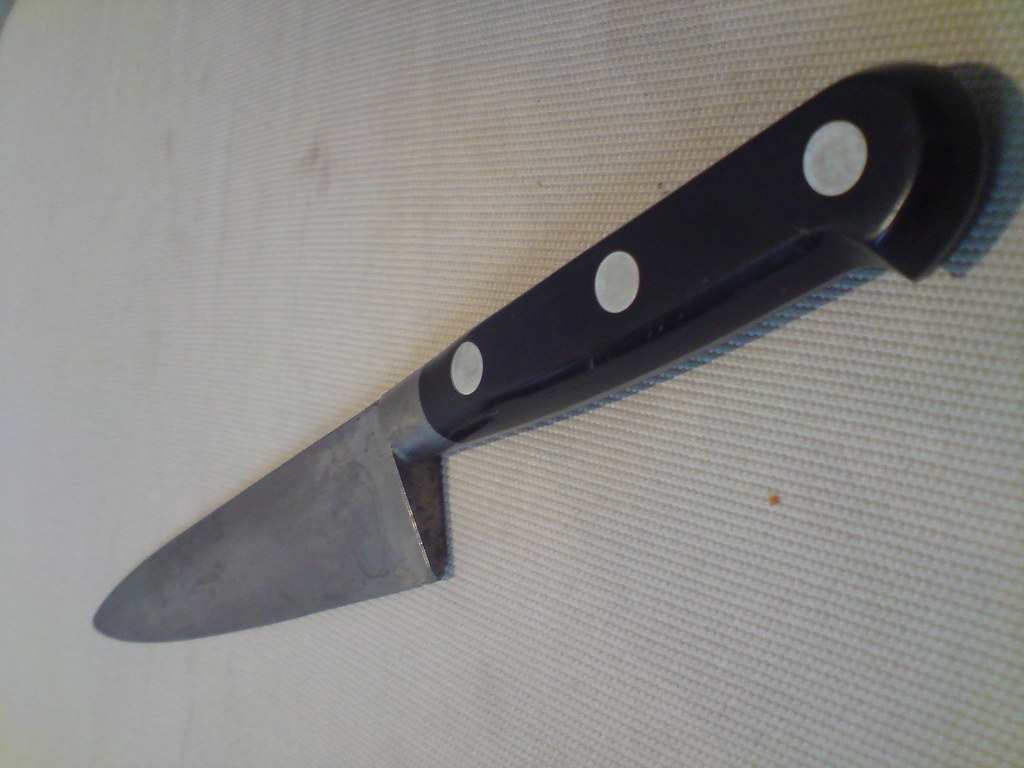
9. The Ergonomics of Mastery: Choosing the Right Handle
A knife is more than just its blade; it is an extension of the hand, and as such, its handle plays a pivotal role in comfort, control, and ultimately, your mastery in the kitchen. Just as blades are diverse, so too are handles, each designed to harmonize with different grips, culinary traditions, and personal preferences. Understanding these nuances is key to finding a knife that truly feels like a natural part of you.
Broadly, handles can be categorized into two main forms: the traditional Japanese ‘wa’ handle and the classic Western ‘yo’ handle. Regardless of type, a handle’s fundamental purpose is to fit comfortably and securely in your palm. This means it should be just the right size and possess a smooth surface, devoid of any rough or sharp edges that could cause discomfort or impede fluid motion. In Western-type handles, the seamless transition of the blade into the handle is also a critical design element, as it directly impacts how comfortably the knife nests in your hand during prolonged use.
A general rule of thumb when considering weight and balance is that knives with traditional Japanese ‘wa’ handles tend to be lighter overall. Conversely, Western-type ‘yo’ handles are typically heavier, a difference stemming from their construction and the materials often used. This disparity in weight distribution significantly influences how the knife feels in motion and its suitability for various gripping styles.
When seeking a well-balanced knife, a simple test involves bringing your thumb and index finger together and resting the knife on your two bottom knuckles, precisely where the blade and handle converge. If the knife remains level, without leaning either backward or forward, it is considered perfectly balanced. However, it’s important to acknowledge that balance is ultimately a matter of individual preference; some chefs, particularly those favoring Japanese blades, prefer their knife’s center of gravity to lie slightly further toward the tip, believing it enhances cutting precision.
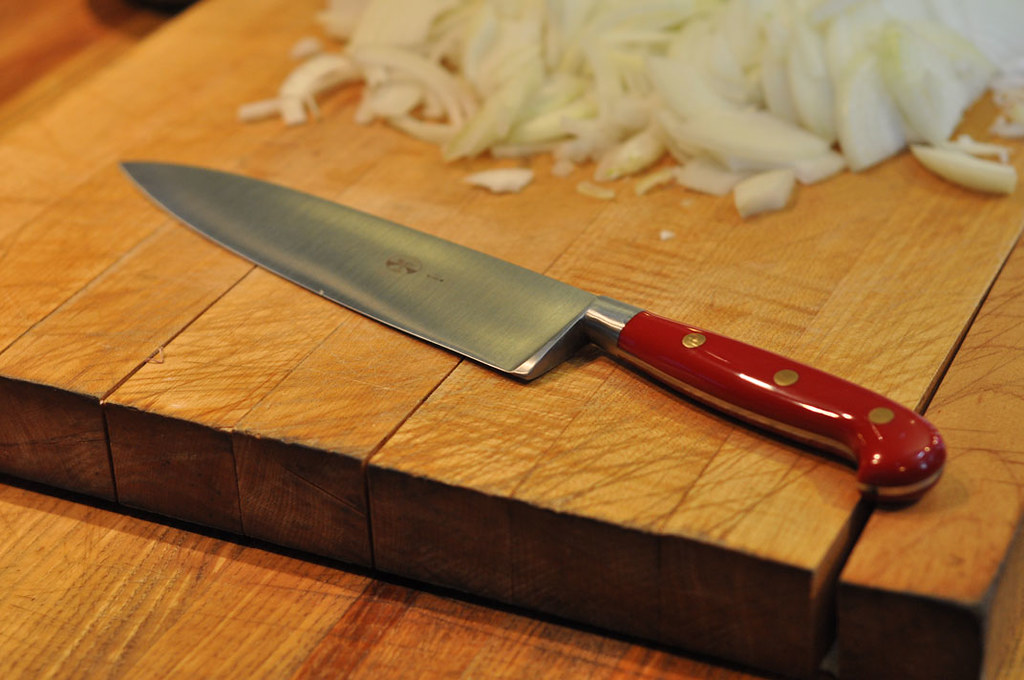
10. Wa vs. Yo: A Deep Dive into Handle Designs
Delving deeper into handle design reveals the distinct philosophies behind Japanese ‘wa’ and Western ‘yo’ handles, each offering unique advantages and catering to different culinary approaches. The choice between these two archetypes is not merely aesthetic; it’s a decision that impacts your grip, balance, and overall experience with the knife.
Japanese ‘wa’ handles, often revered for their elegance and tactile connection, can be crafted from a variety of materials. Magnolia wood is a perennial favorite, particularly among Japanese chefs and sushi masters, due to its neutral properties—it doesn’t retain or impart any smell that could interfere with the subtle flavors of food. Exotic woods like rosewood, alongside popular options like walnut, also feature prominently, as do certain synthetic materials. These handles come in an array of shapes: round, D-shaped, oval, octagonal, or shield-shaped. Notably, a D-shaped handle is asymmetrical, making it suitable exclusively for either right-handed or left-handed users, a detail worth considering for optimal comfort.
The wooden component of a ‘wa’ handle is frequently reinforced with a ferrule—a ring or cap situated at the junction of the blade and handle, designed to strengthen this critical point. These ferrules can be utilitarian, fashioned from plastic, or, in more prestigious and limited series knives, crafted from luxurious materials such as ebony or buffalo horn, adding to the knife’s refined appearance and durability.
A key structural characteristic of Japanese knives is their half tang, where the blade extends only halfway into the handle. This shorter, thinner tang, combined with a lighter wooden handle, typically shifts the knife’s center of balance slightly towards the tip. This forward-leaning balance makes ‘wa’ handled knives exceptionally well-suited for the ‘pinch grip,’ a common culinary technique offering superior control. Furthermore, the handle is simply pressed onto the half tang, which means it can be relatively easily replaced should it wear out or if a different aesthetic preference arises.
In stark contrast, Western ‘yo’ handles are probably the most familiar to anyone who has ever held a kitchen knife. Their defining characteristic is a full tang, meaning the blade’s spine extends completely through to the end of the handle. This tang is robustly sandwiched between two scales, typically made of wood or synthetic material, and securely fastened with rivets and pins, ensuring an incredibly strong and durable connection between blade and handle. Another distinctive trait is the bolster, a metal section that provides a seamless, weighted transition from handle to blade, enhancing both balance and safety.
Yo handles are predominantly fashioned from resilient synthetic materials, laminated wood, or stabilized wood, with natural wood being a less common, though still available, option. Compared to their Japanese counterparts, Western-type knives with ‘yo’ handles tend to be a little heavier. Their center of gravity typically lies directly at the junction of the handle and blade, providing a more neutral balance. This design makes them less ideal for a pinch grip, as the handle is ergonomically shaped and intended to be held fully by the hand, offering a robust and secure feel. While exceptionally durable, repairing or replacing a ‘yo’ handle is far trickier and not a common practice, a testament to their integrated construction.
The journey to choosing a good knife is a deeply personal one, a testament to a man’s commitment to his craft and his understanding of the tools that empower it. From dispelling myths about excessive knife sets to dissecting the intricacies of blade shapes, steel composition, and handle ergonomics, each step is about making an informed, deliberate choice. Your kitchen is your domain, and the knife you wield is more than just metal and wood; it is an extension of your will, a partner in creation. Choose wisely, for this decision will shape your culinary endeavors for years to come, turning every meal preparation into an act of thoughtful mastery.



